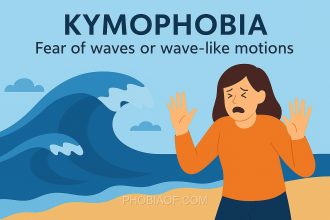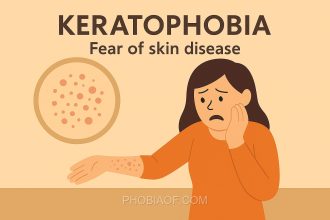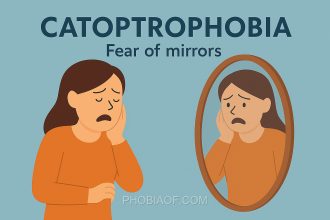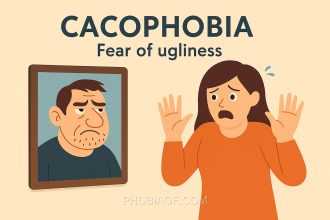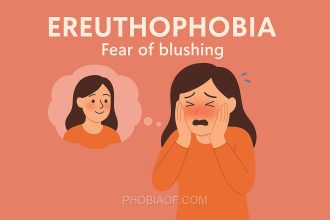Have you ever felt a wave of anxiety at the thought of sweating too much in public, fearing judgment or embarrassment? If so, you’re not alone. This feeling is known as Hyperhidrophobia, the fear of excessive sweating.
In clear, everyday language, Hyperhidrophobia is an intense fear or anxiety about sweating more than what is considered normal. This condition can make social interactions daunting, as individuals worry about visible sweat stains, unpleasant body odor, or the perception of being unclean.
The term Hyperhidrophobia comes from Greek roots: “hyper” meaning “over” or “excessive,” “hidros” meaning “sweat,” and “phobia” meaning “fear.” This fear can impact people significantly, influencing their choices in clothing, social activities, and even career paths, all in an effort to avoid situations that might trigger excessive sweating.
Generally, those who experience hyperhidrophobia may find themselves avoiding physical exertion, warm environments, or stressful situations. The fear can lead to a cycle of anxiety and avoidance, affecting their quality of life.
Understanding and addressing hyperhidrophobia with empathy can help those affected find relief and regain confidence in their daily lives.
Causes of Hyperhidrophobia
Hyperhidrophobia, or the fear of sweating, can develop due to various factors. Understanding these causes can help in managing or overcoming this phobia. Below are some potential causes of hyperhidrophobia:
- Genetic Predisposition:
Some individuals may have a genetic tendency to develop phobias. If a family member suffers from a specific phobia, others in the family might be more susceptible to similar fears, including hyperhidrophobia.
- Traumatic Experiences:
Experiences involving excessive sweating that led to embarrassment or social stigma can trigger hyperhidrophobia. A person who has been ridiculed or criticized for sweating might develop an intense fear of it happening again.
- Learned Behavior:
Observing a family member or friend who is afraid of sweating can lead to adopting the same fear. Children, in particular, are susceptible to developing phobias by observing the behaviors and reactions of adults around them.
- Psychological Factors:
Underlying anxiety disorders can contribute to the development of hyperhidrophobia. A heightened sensitivity to bodily sensations, often seen in anxiety disorders, might make sweating feel overwhelming or threatening.
- Environmental Factors:
Cultural attitudes towards cleanliness and appearance can exacerbate fears related to sweating. In environments where sweat is viewed negatively, individuals might develop anxiety about sweating in public.
Research into the origins of phobias, including hyperhidrophobia, is ongoing. Some theories suggest that phobias might be linked to evolutionary survival mechanisms, although more research is needed to fully understand these connections.
Symptoms of Hyperhidrophobia
Hyperhidrophobia is characterized by an intense fear or anxiety related to sweating. This fear can be overwhelming and may lead to a variety of physical and emotional responses. Recognizing these symptoms is important for managing the phobia effectively. Below are some common symptoms that individuals with hyperhidrophobia might experience:
Physical Symptoms:
- Panic attacks, which can occur suddenly and involve a feeling of intense fear or discomfort.
- Excessive sweating, often paradoxically triggered by the fear of sweating itself.
- Rapid heartbeat, as the body responds to anxiety with a heightened state of arousal.
- Shortness of breath or hyperventilation due to anxiety.
- Shaking or trembling, which can be a result of heightened nervousness.
Emotional and Behavioral Symptoms:
- Avoidance of situations or activities that might induce sweating, such as exercise or public speaking.
- Overwhelming dread or worry about sweating in social or professional settings.
- Preoccupation with controlling the body’s sweat response, which can become an all-consuming concern.
- Feelings of embarrassment or shame about sweating, often leading to social withdrawal.
- Constant checking for signs of sweating, which may exacerbate anxiety and stress.
When hyperhidrophobia is severe, these symptoms can significantly interfere with daily life, affecting one’s ability to engage in normal activities, maintain relationships, and pursue personal or professional goals.
Treatment for Fear of Excessive Sweating
Hyperhidrophobia, the fear of excessive sweating, can be challenging, but it is important to know that this phobia is treatable and manageable over time. With the right approach and support, individuals can significantly reduce their fear and improve their quality of life. Below are some proven therapies and coping strategies that can help in overcoming hyperhidrophobia.
Therapy Options
- Exposure Therapy:
Exposure therapy involves gradually facing the source of fear in a controlled and safe environment. By slowly increasing exposure to situations that trigger fear of sweating, individuals can desensitize themselves and reduce their anxiety over time. This approach helps in building tolerance and reducing avoidance behaviors.
- Cognitive-Behavioral Therapy (CBT):
CBT focuses on changing negative thought patterns and beliefs that contribute to the fear of sweating. Through CBT, individuals learn to challenge irrational thoughts and replace them with more realistic and positive ones. This therapy is effective in altering the mindset and reducing anxiety associated with sweating.
- Counseling:
Individual or group counseling provides a supportive environment to explore fears and anxieties related to sweating. A professional counselor can offer guidance and strategies to cope with the phobia, fostering a sense of empowerment and control.
Self-Help Coping Techniques
- Relaxation Exercises:
Practicing relaxation techniques such as deep breathing, progressive muscle relaxation, or yoga can help reduce overall anxiety levels and promote a sense of calmness.
- Meditation:
Meditation can be a powerful tool for managing anxiety. Regular practice can help individuals become more mindful and less reactive to triggers associated with sweating fears.
- Support Groups:
Joining a support group can provide a sense of community and understanding. Sharing experiences and coping strategies with others who have similar fears can be incredibly reassuring and motivating.
Medication
In severe cases, medication such as anti-anxiety medications might be prescribed to help manage symptoms. However, it is often recommended that medication be considered in conjunction with therapy and coping skills for a more holistic approach.
It is important to seek professional help if hyperhidrophobia is interfering with your daily life. Remember, with the right support and strategies, overcoming this fear is possible.
Conclusion
Understanding the causes and symptoms of hyperhidrophobia, the fear of excessive sweating, is a crucial step towards empowerment. By recognizing the underlying triggers and manifestations of this phobia, individuals can take proactive measures to address their fears and improve their quality of life. Knowledge is a powerful tool that can transform anxiety into manageable challenges.
It is important to remember that overcoming hyperhidrophobia is possible, and many people successfully manage or conquer their phobias with time and the right support. If you or someone you know is struggling with this fear, consider reaching out to a mental health professional or discussing your concerns with a doctor. Therapy and medical guidance can provide effective strategies and reassurance as you work towards overcoming your phobia.
Take heart in knowing that you are not alone, and help is available. With patience, determination, and the right support, you can regain control and lead a more confident, fulfilling life.

